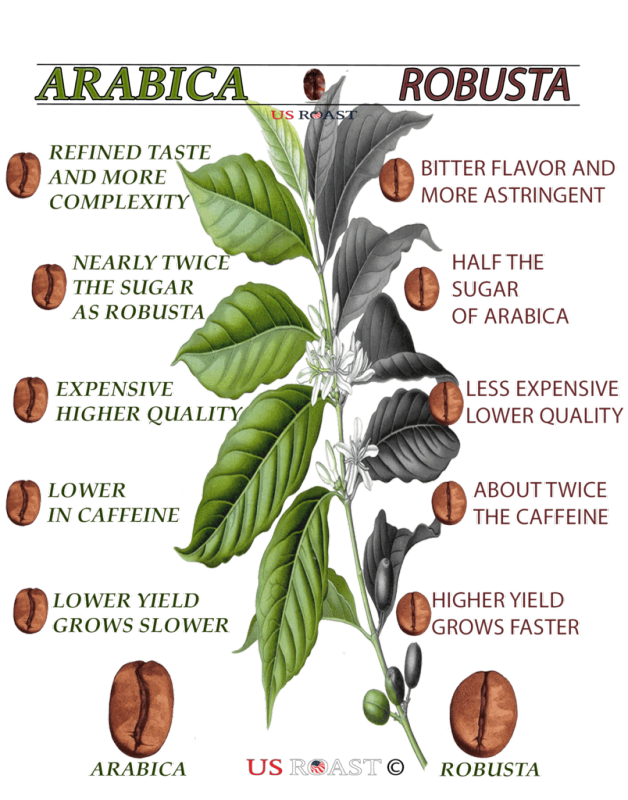 Did you know that there are 124 known species of coffee trees in the world?
Did you know that there are 124 known species of coffee trees in the world?
However, the coffee that we drink is cultivated from only two! They are Coffea arabica and Coffea canephora, more commonly known as Arabica and Robusta. About 70% of the coffee produced globally is Arabica.
According to a recent study, almost 60% of wild coffee species are at risk of extinction. Wild coffee refers to species that grow on their own and are not cultivated for human consumption.
Let’s take a look at coffee in general and why wild coffee extinction will affect the coffee we consume every day.
All About Coffee
You’ve likely seen the brown, oval coffee beans that are ground up to make your coffee drinks. Did you know that they are the processed and roasted seeds of coffee cherries?
 Coffee is actually a stone fruit, just like regular cherries. Coffee trees produce clusters of coffee cherries along their branches. When coffee cherries ripen, they turn from green to bright red, signaling their readiness to be harvested.
Coffee is actually a stone fruit, just like regular cherries. Coffee trees produce clusters of coffee cherries along their branches. When coffee cherries ripen, they turn from green to bright red, signaling their readiness to be harvested.
Coffee cherries are made up of multiple layers. The skin of the coffee cherry, called the exocarp, is thick and bitter, but the layer underneath, the mesocarp, is very sweet and has a similar texture to a grape. Under the mesocarp, there are three more protective layers, before reaching the bluish-green seed itself.
Arabica beans have less caffeine and higher sugar content than Robusta, thus giving them a smoother, sweeter flavor. Because of Robusta’s harsher flavor, it is typically used for instant coffee or cheaper supermarket blends.
Arabica is grown at higher, cooler altitudes while Robusta can be grown at warmer sea levels. Arabica plants are more fragile, more susceptible to pests, and produce less fruit than Robusta, so their beans are more expensive.
 The origin of coffee is not clear but most historians believe that coffee trees have existed in Ethiopian forests for over a thousand years. Both Arabica and Robusta originated in Ethiopia, and are now grown in other parts of Africa, Southeast Asia, Central America, and South America.
The origin of coffee is not clear but most historians believe that coffee trees have existed in Ethiopian forests for over a thousand years. Both Arabica and Robusta originated in Ethiopia, and are now grown in other parts of Africa, Southeast Asia, Central America, and South America.
Results of Studies
Dr. Aaron David, a British botanist, and his colleagues have been studying the effects of climate change and deforestation on wild coffee species.
Why should this matter if we only cultivate and drink two species? Coffee is the second most sought-after commodity in the world, after crude oil!
The coffee industry is estimated to be worth $100 billion worldwide, supporting millions of people who make their living from coffee. Coffee farmers already face problems from drought and disease, but the effect of global warming – hotter, drier Earth – adds further pressure on them.
Scientists believe that wild coffee species contain genes that help us cultivate different varieties of coffee plants that can address these problems. They hope that by bringing attention to the dangers of losing many of our coffee species, we can take steps to preserve them in nationally protected forests or in seed banks.
Sources: BBC, NYTimes, PBS, ncausa.org, msu.edu, compoundchem.com







